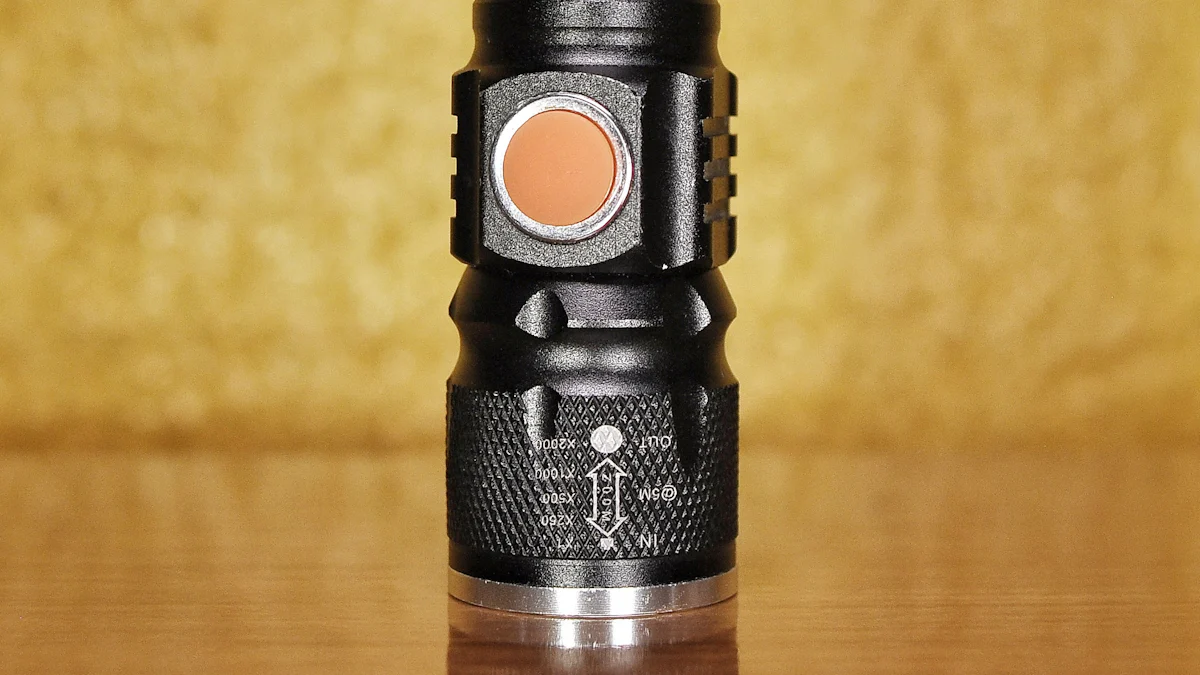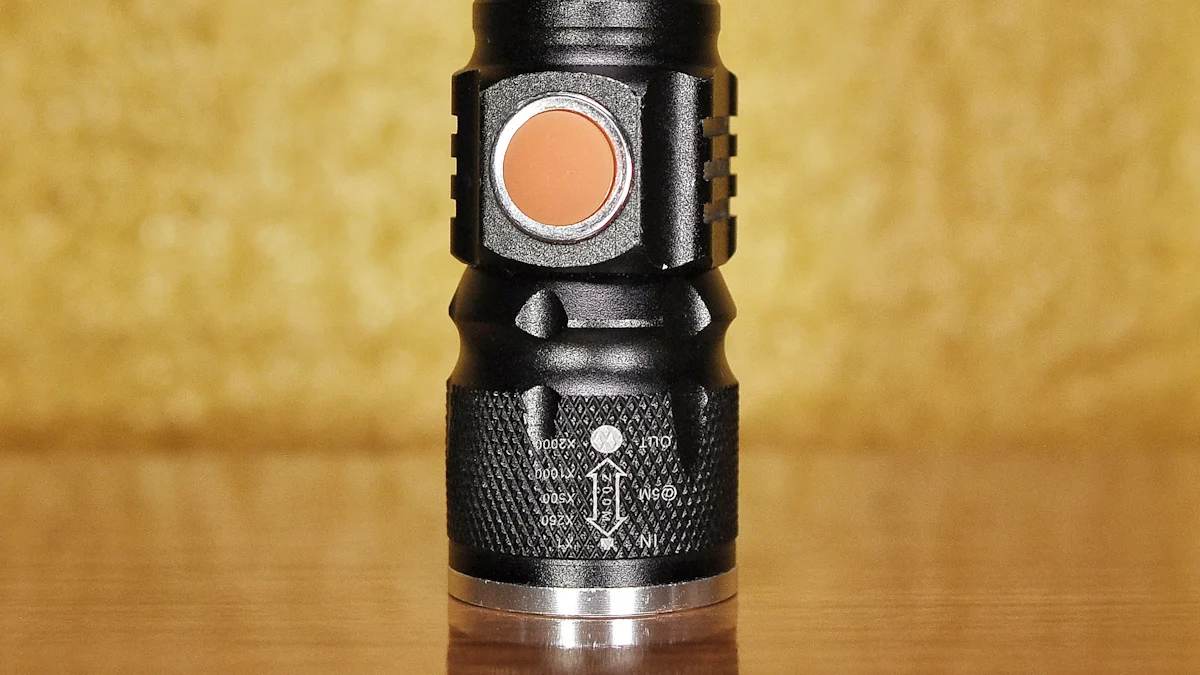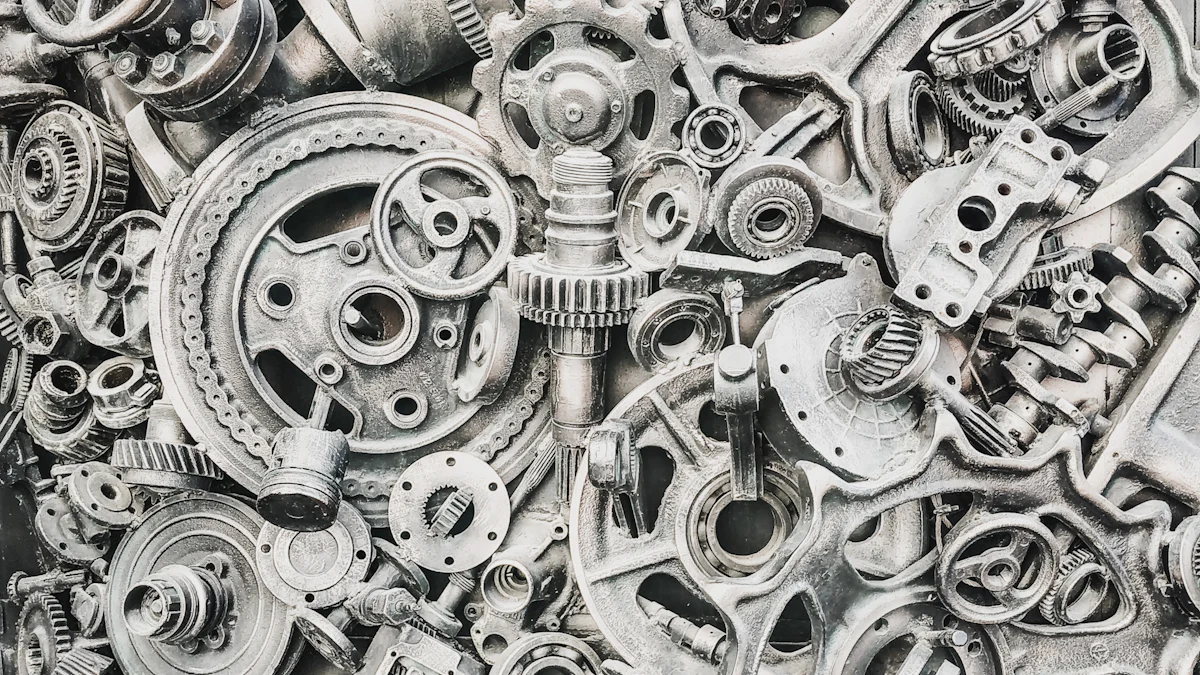Discover the Essential Flashlight Parts Explained

Understanding the flashlight parts is crucial for maximizing its functionality. A quick glimpse at the key components reveals the battery, bulb, switch, reflector, lens, and outer casing. This blog aims to delve deeper into each part to shed light on their significance. By exploring the intricacies of these components, readers can make informed decisions when choosing a flashlight that suits their needs perfectly.
Flashlight Parts Overview

Basic Components
Battery
When it comes to flashlights, the battery is a vital component that powers the entire device. Different types of batteries, such as disposable and rechargeable options, can be used based on specific needs. Recent advancements in battery technology, like the introduction of lithium-ion batteries, have significantly improved the performance and lifespan of rechargeable LED flashlights.
Bulb
The bulb plays a crucial role in producing light in a flashlight. Traditional incandescent bulbs were commonly used in older models, but modern flashlights often utilize LED bulbs due to their energy efficiency and bright illumination. LED technology consumes less power while providing a more intense beam of light.
Switch
The switch is what controls the operation of the flashlight. It allows users to turn the light on or off with ease. Understanding the different types of switches and their mechanisms can help users operate their flashlight more efficiently.
Additional Components
Reflector
A reflector within a flashlight helps control and direct the light beam produced by the bulb. It works together with the lens to ensure uniformity and clarity in the emitted light. By choosing the right type of reflector, users can customize the dispersion pattern of their flashlight's beam.
Lens
The lens in a flashlight serves to refine and optimize the quality of light emitted by controlling its dispersion pattern. Specialized lenses can modify characteristics like creating spotlight or floodlight effects based on specific requirements. Choosing the appropriate lens material and shape is essential for achieving desired lighting effects.
Outer Casing
The outer casing of a flashlight not only protects its internal components but also houses essential parts like batteries and lamps. Material considerations for casings impact durability and ergonomics, making it crucial to select a casing that suits individual preferences.
Detailed Parts Explanation

Battery
Batteries are the lifeblood of flashlights, providing the necessary power to illuminate the darkness. Understanding the types of batteries available is crucial for selecting the right one for your needs. From traditional alkaline batteries to advanced lithium-ion options, each type offers unique benefits. When it comes to battery placement, ensuring a secure and stable position within the flashlight is essential for optimal performance.
Bulb
The bulb is where the magic of light begins in a flashlight. Exploring the differences between incandescent bulbs and LED bulbs can help users appreciate the evolution of lighting technology. While incandescent bulbs have a warm glow, LED bulbs shine brightly with efficiency and longevity, making them a popular choice for modern flashlights.
Switch
The switch serves as the gateway to instant illumination, allowing users to control their light source effortlessly. By understanding the various types of switches, such as push buttons or twist mechanisms, users can tailor their flashlight experience to suit their preferences. Delving into the switch mechanism sheds light on how these components work harmoniously to deliver reliable functionality.
Reflector
Reflector
The function of reflector in a flashlight is crucial for directing and maximizing the light output. It works by bouncing the light rays emitted from the bulb in a specific direction, enhancing the overall brightness and reach of the beam. By strategically positioning the reflector within the flashlight, users can optimize the illumination for various tasks.
Types of Reflectors
Smooth Reflectors: These reflectors provide a concentrated beam with a defined hotspot, ideal for long-distance visibility.
Orange Peel Reflectors: Featuring a textured surface, these reflectors offer a balance between flood and throw, making them versatile for different lighting needs.
OP (Optimized Performance) Reflectors: Known for their efficiency in maximizing light output, OP reflectors are designed to minimize wasted light and improve overall brightness.
Lens
The lens material used in flashlights greatly impacts light transmission and durability. Opting for high-quality materials like polycarbonate or tempered glass ensures clarity and resistance to impact or scratches, prolonging the lifespan of the flashlight.
When it comes to lens shape, users can choose between flat lenses for broader coverage or convex lenses for focusing light into a more concentrated beam. The shape of the lens influences how light is dispersed, allowing users to customize their lighting experience based on specific requirements.
Outer Casing
Material of casing plays a vital role in determining the durability and functionality of a flashlight. Common materials include aluminum, stainless steel, or rugged plastics that offer varying degrees of impact resistance and weight considerations.
Considering design considerations when selecting an outer casing involves evaluating factors like grip ergonomics, waterproof capabilities, and heat dissipation properties. A well-designed casing enhances user experience by providing comfort during prolonged use while ensuring reliable performance in diverse environments.
Practical Considerations
Choosing the Right Flashlight
Evaluate Your Needs: Determine the intended use of the flashlight, whether for outdoor adventures, emergency situations, or everyday tasks. Understanding your requirements will guide you in selecting a flashlight with the appropriate features and specifications.
Consider Light Output: Assess the brightness levels required for your activities. LED flashlights offer energy-efficient illumination with varying lumens to cater to different lighting needs. Opt for a flashlight that provides sufficient brightness without compromising battery life.
Battery Life Matters: LED flashlights are known for their extended battery life, lasting six to ten times longer than traditional models. This energy efficiency not only reduces operational costs but also ensures reliable performance when you need it most.
Size and Weight: Factor in portability and convenience when choosing a flashlight. Compact designs are ideal for everyday carry, while larger models may offer enhanced features suited for specific purposes like camping or search operations.
Durability and Water Resistance: Select a flashlight built to withstand rugged conditions and adverse weather. Look for models with durable casings and water-resistant properties to ensure longevity and functionality in challenging environments.
Maintenance Tips
Regular Inspection: Periodically check your flashlight for any signs of wear, corrosion, or damage. Ensure that all components are clean and properly aligned to maintain optimal performance.
Battery Care: To prolong battery life, avoid leaving batteries inside the flashlight during long periods of inactivity. Remove batteries when not in use and store them separately in a cool, dry place.
Cleaning Procedures: Clean the lens, reflector, and casing of your flashlight regularly using a soft cloth or cotton swab dampened with mild soapy water. Avoid harsh chemicals that may damage the components.
Lubrication Checks: Apply a small amount of lubricant to the threads and O-rings of your flashlight to prevent rusting and maintain smooth operation of moving parts.
Storage Practices: Store your flashlight in a protective case or holster to prevent accidental damage or exposure to extreme temperatures. Proper storage ensures that your flashlight remains ready for use whenever needed.
To summarize, understanding the crucial flashlight parts is key to maximizing functionality. Choosing the right components, from the battery to the reflector and lens, ensures optimal performance. Selecting a flashlight tailored to specific needs enhances user experience and efficiency. Remember, each part plays a vital role in illuminating your path effectively. It's essential to prioritize quality and compatibility when assembling your ideal flashlight setup. Make informed decisions based on your requirements for reliable lighting solutions.
2024/6/7
See Also
Exploring Various Kinds of Flashlights
Key Pointers for Flashlight Care
Mastering Flashlight Battery Essentials
The Definitive Manual for Flashlight Upkeep and Sanitization
Selecting the Perfect Household Flashlight: An In-Depth Manual
